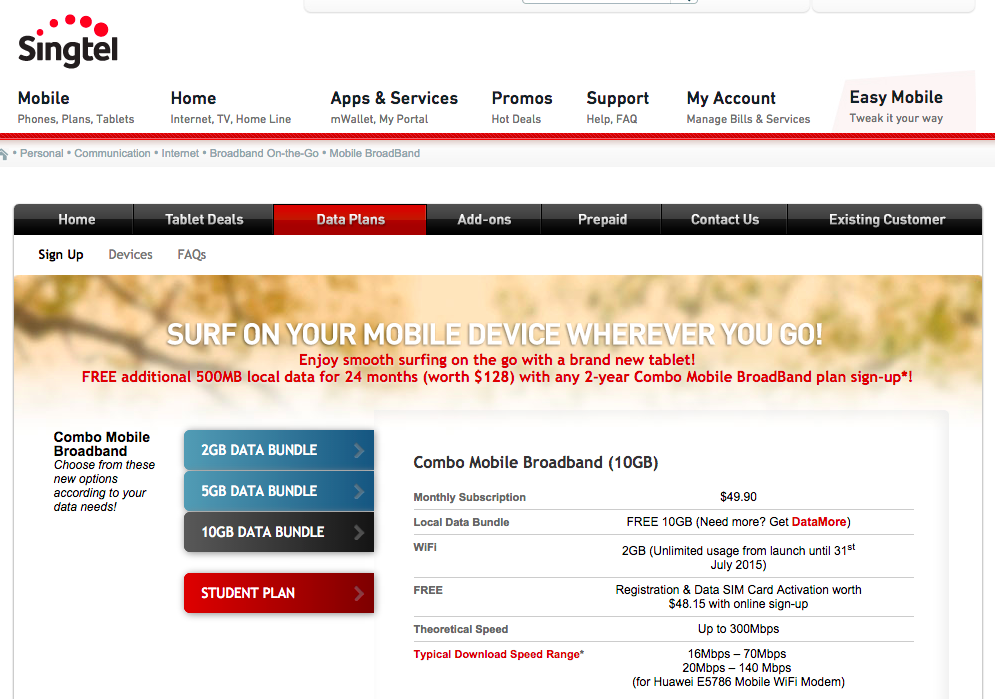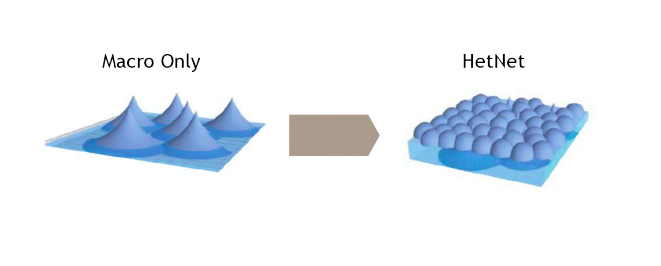MyRepublic recently announced plans to be the fourth telecommunications operator. The first offering on the deck is unlimited data for mobile plans. This does not really comes as a shockwave in the industry. MyRepublic had submitted comments to IDA’s public consultation on Proposed Allocation of Spectrum for International Mobile Telecommunications (“IMT”) and IMT-Advanced Services and Options to Enhance Mobile Competition, along side with local and international operators such as Singtel, StarHub and Viacom.
In MyRepublic’s comments, they portrayed themselves as a solution to increase competition in the mobile space and had lay out general steps and requirements achieve its position in the market.
In general MyRepublic had asked the authorities to cover the fourth operator’s ass for three years through a series of requests to either relax regulations, adopt new regulations, be the operator’s anchor client, give favorable pickings to the new operator and moderating the market prices/forces to ensure that the operator does not run into high costs or other barriers of entry for three years. How like is IDA to accede to all the requests is a question that IDA can only answer.
What MyRepublic laid down on the table is likely to their flagship product for the mobile space as they are aiming to be a data only mobile operator. The unlimited data plan, like the 1Gbps offering, would likely be replicated by Singtel, M1 and StarHub in a couple of years. How MyRepublic can offer such a plan lies in their proposed plan to use Netlink Trust, or more commonly known by its former name, OpenNet as a trunk. By using Netlink Trust’s fibre infrastructure, MyRepublic effectively bypassed the need to establish its own infrastructure. MyRepublic had also requested for their roof installation to be classified as a non-residential (Non-Residential Premises, NRP) terminating point rather than a non-building address points (NBAP). With such a request, one would assume that the cost of using an NRP is cheaper than that of NBAP.
Now why does Singtel, M1 and StarHub provides data plans that have data limit on it? For couple of reasons.
Regulatory issue and market perception

IDA states that ISPs have to publish the typical speed along side with the maximum theoretical speed mobile broadband can achieve. If the typical speed is too far off from the maximum theoretical speed, the product might be off putting to consumers. Singtel, M1 and Starhub are relying on existing infrastructure to provide the mobile connectivity. It is likely that current infrastructure is unable to provide the data bandwidth required to sustain a high typical bandwidth to consumers if everyone is on their mobile phone surfing the net.
Potential cannibalisation
The ISPs would also want to avoid cannibalising their on-premises offerings like Singtel’s Fibre Broadband, which has not data cap. By avoiding cannibalisation, ISP can either cross sell or up sell other products, like cable television as these products are reliant on the broadband connection in the first place. Thus, helping them to earn more from the consumers.
To resolve these issues, ISPs have to curtail the use of mobile broadband as a substitute to on-premise broadband. Introducing a data cap would solve the two issues highlighted above.
A data cap serves as a proxy to normalised the bandwidth consumption. Consumers are now programmed to be conscious of how much data they use in order not to incur additional charges in their bills. As much as possible, consumers would try to offload their data usage to wifi networks, at home, in office or other open networks like Wireless@SG and Y5Zone in Starbucks, or use apps to impose a bandwidth cap to ensure continuous, but experience compromised, internet usage. By offloading consumers’ data consumption, the amount of bandwidth freed up can be re-distributed to other mobile users. Thus, boosting the typical bandwidth that ISPs can advertise.
A data cap also immediately curtails users’ ingenuity to use mobile broadband as their primarily broadband connection as this would incur heavy usage costs. Consumers would then have to look for the on-premise broadband services and then get suckered into buying other complementary products like cable TV. In the end, consumers would have fork out two to three times the actual cost they needed to pay, assuming it is one mobile line and one fibre plan.

By establishing a heterogeneous network (HetNet) of many small multiple cells and using OpenNet as the backbone, MyRepublic would be able to offer unlimited data plans at their targeted typical bandwidth speed. MyRepublic would be able to isolate which of the many small service areas that require more resources and then scale up their equipment there to sustain the targeted typical bandwidth speed enjoyed by their customers. Cannibalisation would be the least of MyRepublic’s concern. In their books, both networks are complementary of each other. At the very least, pricing of their data plans might be similar to the pricing of their on-premises broadband plans.
But we had a fourth telco before!
Yes, Virgin Mobile operated as a fourth telco in the late 1990s. Virgin Mobile Singapore is actually an Mobile Virtual Network Operator (MVNO) who partnered with Singtel. Virgin basically piggybacked on Singtel’s infrastructure to offer its services. However, this model is not sustainable as MVNOs can only operate on a cost+ basis. Upon its closure in Singapore, Virgin Mobile’s subscriber base of 30,000 was absorbed back into Singtel’s fold. MyRepublic explicitly rejects the option to be a MVNO on such basis.
But the mobile space is saturated!
Mobile penetration rate in Singapore is 148% in 2014. This meant that there are about 3 mobile lines shared between 2 person. With such an absurdly high rate, it would be hard for an entrant to break into the market. But MyRepublic stands to gain a lot of customers in the short run of 3 years. Many existing data-hungry subscribers of the incumbents would want to switch to MyRepublic as soon as possible.
But the incumbents will catch up!
For the incumbents to catch up to MyRepublic’s offerings, they would have to either upgrade their current infrastructure or switch to OpenNet as well. This takes time as it would be a monstrous task to achieve.
Then, what comes after?
Three years might be a long time. But within the span of three years, new government initiatives pushing agendas as smart homes, smart cities will be more prominent. These initiatives will require substantial investment in connectivity and an unlimited mobile data plan would be an attractive option to be used. And also, who would know what the future will hold? MyRepublic would be dumb to rest in its laurels and not capturing such opportunities.
In short, MyRepublic is set to stay in the market once given the green light by IDA. This will be an uphill battle, but ideally, an worthy endeavour.
MyRepublic is accepting names for a telco trial at the IT Show 2015:
